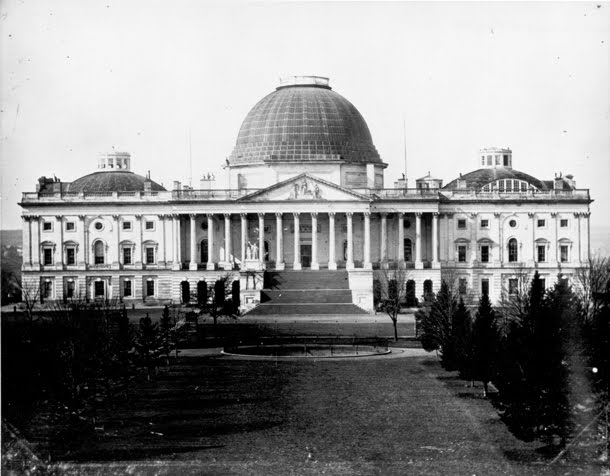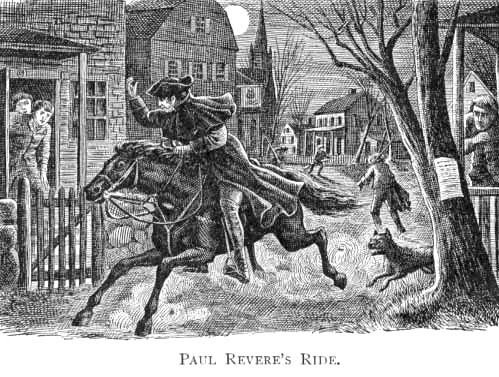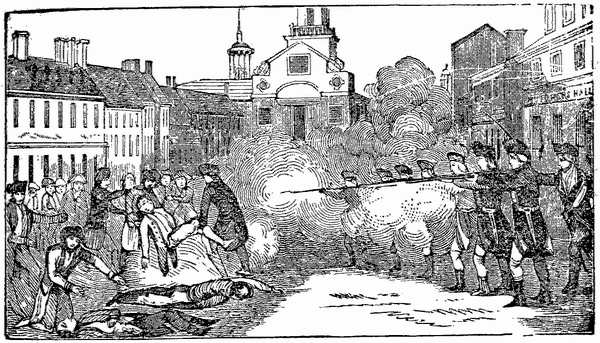From The Witherspoon Institute:
The Ninth Circuit’s Desperate Targeting of Justice Kennedy
February 9, 2012
This week’s decision in the Prop 8 case is a desperate appeal to Justice Kennedy, and the latest assault of judicial supremacy.
Perhaps there’s something in the water in California. In the Golden State, the judges seem to be in the grip of logical fallacies. First there was Judge Vaughn Walker of the U.S. District Court in San Francisco, who argued eighteen months ago in Perry v. Schwarzenegger that a right of same-sex marriage was to be found in the capacious folds of the due process clause of the Fourteenth Amendment. A crucial element in Judge Walker’s reasoning (as I explained inPublic Discourse at the time) was a fallacy of composition, taking something true in a limited sense and concluding that it was true in a much larger sense. Walker reasoned that because our society no longer considers the sexes radically unequal in marriage, therefore “gender no longer forms an essential part of marriage,” from which it follows that it is not even legitimately relevant to the law of marriage whether the spouses are of different sexes. But of course when restated in this less oblique way, everyone sees how obviously it does not follow.
The fallacies continue in this week’s ruling of Judge Stephen Reinhardt, in the case now known (with a new governor of California) as Perry v. Brown. Writing for a 2–1 panel of the U.S. Court of Appeals for the Ninth Circuit, Reinhardt works the fallacy of equivocation for all it’s worth. But before examining his reasoning, we should review how we got here.
Since 1977, California has had legislation on its books stating that marriage is only between one man and one woman. (Previously, no one had thought it necessary to say, in the law, something so universally understood.) In 2000, reasonably worried about developments in other states—the same ones that prompted Congress to pass the Defense of Marriage Act in 1996—the people of California passed Proposition 22, an “initiative statute” reiterating the conjugal nature of marriage between a man and a woman. “Initiative statutes” in California are of lesser authority than the state constitution, but the legislature cannot repeal them.
In May 2008, the California supreme court held that Proposition 22 ran afoul of the state constitution’s equal protection clause, leaning heavily on the fact that in the last decade the state legislature had given legal recognition to same-sex “domestic partnerships,” generously going so far as to declare in 2003 that same-sex couples in such unions enjoyed all the “incidents of marriage.” Thus, the state’s high court said, by giving a status of all-but-married to same-sex couples, the state had dangled marriage-in-full just out of reach, making these couples “second-class citizens.” Ironically, the state would have been in a stronger legal position had it offered same-sex couples no recognition at all, though the California high court probably would have found a way to its desired result in any event.
This ruling survived less than six months. In the most astonishing political reversal of judicial activism in living memory, the people of California passed Proposition 8, an amendment to the state constitution that reversed the state supreme court on same-sex marriage but left domestic partnership arrangements in place. Clearly the majority of Californians believe there is something special about marriage as a natural institution, the foundation of the family and thus of society itself, whatever else they might think about accommodating the desires of same-sex couples to have some legal recognition.
Fast-forward now to the Ninth Circuit’s ruling in Perry. Though he affirms the ruling of Judge Walker in the federal district court below, Judge Reinhardt largely ignores Walker’s wild reasoning, with its thuggish attacks on the putative religious motives of Proposition 8’s supporters, and its tendentious “findings of fact.” Maneuvering much more cautiously, Reinhardt has gone back to the well dug by the state supreme court in 2008. He offers no opinion on the question whether a full-fledged right to same-sex marriage exists in the Constitution. Instead he argues that inasmuch as California gives same-sex couples every legal right and responsibility of marriage but withholds the symbolic name of “marriage” for their relationships—and moreover, inasmuch as the state briefly did bestow the name of marriage on those relationships, but subsequently withdrew such recognition—it has violated the principle of equality, and without any “rational basis.”
Reinhardt’s heavy stress on the 143 days in 2008 when same-sex couples could marry in California is pivotal to his rhetorical strategy. And it is just here that he engages in the fallacy of equivocation. Throughout his opinion, Reinhardt claims over and over that “the state” or “the state constitution” had given same-sex couples full marriage rights. It would be quite different, you see, if such rights had never been given. But to give them, and then take them away—there’s the grave sin of “discrimination”!
Yet everyone knows that “the state” did no such thing as give same-sex couples the right to marry in California. Much less did “the state constitution” do so. Each of the political powers competent to give decisive shape and form to the law of marriage in the state—namely, the legislature and the people at the polls—had consistently acted to protect the conjugal understanding of marriage, as society’s most fundamental natural institution, the bedrock of the natural family. The only institution claiming to speak in the name of the “state” that had blessed the idea of same-sex “marriage” was the state supreme court, and its ruling had been erased in record time at the earliest opportunity by the highest constitutional authority in California, the people.
Reinhardt’s equivocation springs from the pernicious doctrine of judicial supremacy. The state constitution is the embodiment of the state’s whole political authority—it is the state speaking, as it were. But according to the contemporary dogma of judicial power, when a state’s highest court speaks, itis the constitution speaking—and so the court is the state.
Proposition 8 is thus presented in Reinhardt’s opinion as a “new substantive rule” in California constitutional law, rather than what it obviously was—a restoration of an age-old truth about marriage that has consistently been honored in the state, but for a very brief period in which it was lawlessly denied by a state court run amok. After it was reined in by Prop 8, that court had strained to hold that the 18,000 “marriages” of same-sex couples in a few months of 2008, contracted only because of its repudiated misinterpretation of the law, were still valid despite the repudiation—and this it could only do by pretending that it was Prop 8, not its own activism, that worked a change in the law.
It is to this discredited California supreme court that Reinhardt turns, for an “authoritative” judgment that Prop 8 created a “new rule” in the law. It is ordinarily the case, for sound reasons of federalism, that federal courts defer to the highest court of each state on the interpretation of state laws and constitutions. But no legal doctrines are meant to be followed so blindly, in the face of obvious realities.
Why is Judge Reinhardt so determined to describe Prop 8 as “new law” that changed a cherished status quo in California? Because he is desperate to bring this case into line with Romer v. Evans, a 1996 ruling of the Supreme Court overturning a constitutional referendum in Colorado. In Colorado, the people had acted constitutionally to prohibit state and local legislative bodies from adding “sexual orientation” to local anti-discrimination law, and to overturn several municipal ordinances that had already done so. For a 6–3 Supreme Court, Justice Anthony Kennedy had described the people’s amendment as a “new” rule, uniquely attacking homosexual persons as a class, and unexplained by anything other than irrational “animus” against them.
This is exactly how Reinhardt wants the Supreme Court to see Proposition 8. Every element of his opinion is engineered to assimilate this case to Romer—the preposterous judgment that Prop 8 is a “new substantive rule,” the setting up and knocking down of straw-man arguments for the amendment, the misunderstanding of the vital connection between marriage and procreation, and the pat conclusion that no “rational” differentiation can be made between same-sex couples and opposite-sex couples that will justify the “deprivation” of marriage rights briefly given to the former by “the state.” Reinhardt even throws in the insupportable claim that protecting marriage as it has always existed “stigmatizes” gays and lesbians as “inferior” persons. The truth is that it merely recognizes the obvious fact that their relationships cannot rightly be called “marriages.”
In short, Judge Reinhardt has cooked a dish intended to appeal especially to Justice Kennedy, the author of Romer. Since that decision, its six-justice majority has probably declined to just five, with the replacement of Sandra Day O’Connor by Samuel Alito. Kennedy’s own vote for same-sex marriage is therefore indispensable to the success of Reinhardt’s perfectly transparent agenda.
It is worth noting that Reinhardt says as little as possible about Lawrence v.Texas in 2003, a 5–4 ruling also authored by Justice Kennedy, which held on due process grounds that a state cannot prohibit homosexual sodomy. That is no doubt because Kennedy had flatly denied in Lawrence that a constitutional right to same-sex marriage was implied by the Court’s holding in that case. “No, Justice Kennedy,” Judge Reinhardt seems to say, “don’t look over there at Lawrence, look over here at Romer!”
Perhaps Judge Reinhardt thinks Justice Kennedy is a slightly addled puppet, who can be made to dance as one wishes if only the right string is pulled. But Justice Kennedy should find all this obvious targeting of himself to be deeply offensive. For Reinhardt’s assimilation of Perry to Romer is ably rebutted by the dissent of Judge N. Randy Smith, who notes that California’s Prop 8 has a much narrower reach than did Colorado’s Amendment 2. Smith also gives a nice tutorial in how “rational basis” review is properly done, explaining that it was perfectly reasonable for the people of California to believe that reserving the name of “marriage” for opposite-sex couples would advance its “interests in promoting responsible procreation and optimal parenting.” One can even accept Romer, in other words, without reaching Reinhardt’s conclusions. For good measure, Judge Smith also reminds us that the Supreme Court has a forty-year-old precedent (Baker v. Nelson, 1972) holding that there is no constitutional basis for a “right” to same-sex marriage—and that lower courts are bound by that precedent unless and until the Supreme Court reverses it.
There was a cost to Judge Reinhardt’s rhetorical strategy in the Perry case, from the point of view of the same-sex marriage agenda. His equality argument turns in large part on the presence of same-sex domestic partnerships in California, which enjoy all the substantial legal status of marriage but lack the symbolic recognition of the name. Most of the states do not have such “civil unions,” and many states have even prohibited them along with same-sex marriage, anticipating the strategy of gaining an inch in order to take a mile. It is ironic, of course, that the claim of “discrimination” is easier to make against states that have tolerantly given much ground already to the same-sex marriage movement. But if Reinhardt had wanted to give the opponents of same-sex marriage a powerful argument against granting any legal recognition to homosexual couples wherever such recognition can still be forestalled or even reversed, he could not have designed it better.
Were this Ninth Circuit ruling to be affirmed by the Supreme Court on something like the basis on which Judge Reinhardt has placed it, the justices would be inviting the division of the country into states where same-sex marriage is more or less permanently foreclosed (because there are no civil unions), and states where it is more or less guaranteed by judicial fiat (because those states do give some recognition to same-sex couples’ arrangements). This is an untenable situation for the country, especially with the Democratic Party making an all-out assault on the Defense of Marriage Act, which protects a state’s decision not to recognize same-sex marriages contracted outside its borders. Judge Reinhardt’s opinion is an invitation to a national conflagration over marriage. The Supreme Court should politely but firmly decline the invitation.
Matthew J. Franck is Director of the William E. and Carol G. Simon Center on Religion and the Constitution at the Witherspoon Institute.
Receive Public Discourse by email, become a fan of Public Discourse on Facebook, follow Public Discourse on Twitter, and sign up for the Public Discourse RSS feed.
Support the work of Public Discourse by making a secure donation to The Witherspoon Institute.
Copyright 2012 the Witherspoon Institute. All rights reserved.
The fallacies continue in this week’s ruling of Judge Stephen Reinhardt, in the case now known (with a new governor of California) as Perry v. Brown. Writing for a 2–1 panel of the U.S. Court of Appeals for the Ninth Circuit, Reinhardt works the fallacy of equivocation for all it’s worth. But before examining his reasoning, we should review how we got here.
Since 1977, California has had legislation on its books stating that marriage is only between one man and one woman. (Previously, no one had thought it necessary to say, in the law, something so universally understood.) In 2000, reasonably worried about developments in other states—the same ones that prompted Congress to pass the Defense of Marriage Act in 1996—the people of California passed Proposition 22, an “initiative statute” reiterating the conjugal nature of marriage between a man and a woman. “Initiative statutes” in California are of lesser authority than the state constitution, but the legislature cannot repeal them.
In May 2008, the California supreme court held that Proposition 22 ran afoul of the state constitution’s equal protection clause, leaning heavily on the fact that in the last decade the state legislature had given legal recognition to same-sex “domestic partnerships,” generously going so far as to declare in 2003 that same-sex couples in such unions enjoyed all the “incidents of marriage.” Thus, the state’s high court said, by giving a status of all-but-married to same-sex couples, the state had dangled marriage-in-full just out of reach, making these couples “second-class citizens.” Ironically, the state would have been in a stronger legal position had it offered same-sex couples no recognition at all, though the California high court probably would have found a way to its desired result in any event.
This ruling survived less than six months. In the most astonishing political reversal of judicial activism in living memory, the people of California passed Proposition 8, an amendment to the state constitution that reversed the state supreme court on same-sex marriage but left domestic partnership arrangements in place. Clearly the majority of Californians believe there is something special about marriage as a natural institution, the foundation of the family and thus of society itself, whatever else they might think about accommodating the desires of same-sex couples to have some legal recognition.
Fast-forward now to the Ninth Circuit’s ruling in Perry. Though he affirms the ruling of Judge Walker in the federal district court below, Judge Reinhardt largely ignores Walker’s wild reasoning, with its thuggish attacks on the putative religious motives of Proposition 8’s supporters, and its tendentious “findings of fact.” Maneuvering much more cautiously, Reinhardt has gone back to the well dug by the state supreme court in 2008. He offers no opinion on the question whether a full-fledged right to same-sex marriage exists in the Constitution. Instead he argues that inasmuch as California gives same-sex couples every legal right and responsibility of marriage but withholds the symbolic name of “marriage” for their relationships—and moreover, inasmuch as the state briefly did bestow the name of marriage on those relationships, but subsequently withdrew such recognition—it has violated the principle of equality, and without any “rational basis.”
Reinhardt’s heavy stress on the 143 days in 2008 when same-sex couples could marry in California is pivotal to his rhetorical strategy. And it is just here that he engages in the fallacy of equivocation. Throughout his opinion, Reinhardt claims over and over that “the state” or “the state constitution” had given same-sex couples full marriage rights. It would be quite different, you see, if such rights had never been given. But to give them, and then take them away—there’s the grave sin of “discrimination”!
Yet everyone knows that “the state” did no such thing as give same-sex couples the right to marry in California. Much less did “the state constitution” do so. Each of the political powers competent to give decisive shape and form to the law of marriage in the state—namely, the legislature and the people at the polls—had consistently acted to protect the conjugal understanding of marriage, as society’s most fundamental natural institution, the bedrock of the natural family. The only institution claiming to speak in the name of the “state” that had blessed the idea of same-sex “marriage” was the state supreme court, and its ruling had been erased in record time at the earliest opportunity by the highest constitutional authority in California, the people.
Reinhardt’s equivocation springs from the pernicious doctrine of judicial supremacy. The state constitution is the embodiment of the state’s whole political authority—it is the state speaking, as it were. But according to the contemporary dogma of judicial power, when a state’s highest court speaks, itis the constitution speaking—and so the court is the state.
Proposition 8 is thus presented in Reinhardt’s opinion as a “new substantive rule” in California constitutional law, rather than what it obviously was—a restoration of an age-old truth about marriage that has consistently been honored in the state, but for a very brief period in which it was lawlessly denied by a state court run amok. After it was reined in by Prop 8, that court had strained to hold that the 18,000 “marriages” of same-sex couples in a few months of 2008, contracted only because of its repudiated misinterpretation of the law, were still valid despite the repudiation—and this it could only do by pretending that it was Prop 8, not its own activism, that worked a change in the law.
It is to this discredited California supreme court that Reinhardt turns, for an “authoritative” judgment that Prop 8 created a “new rule” in the law. It is ordinarily the case, for sound reasons of federalism, that federal courts defer to the highest court of each state on the interpretation of state laws and constitutions. But no legal doctrines are meant to be followed so blindly, in the face of obvious realities.
Why is Judge Reinhardt so determined to describe Prop 8 as “new law” that changed a cherished status quo in California? Because he is desperate to bring this case into line with Romer v. Evans, a 1996 ruling of the Supreme Court overturning a constitutional referendum in Colorado. In Colorado, the people had acted constitutionally to prohibit state and local legislative bodies from adding “sexual orientation” to local anti-discrimination law, and to overturn several municipal ordinances that had already done so. For a 6–3 Supreme Court, Justice Anthony Kennedy had described the people’s amendment as a “new” rule, uniquely attacking homosexual persons as a class, and unexplained by anything other than irrational “animus” against them.
This is exactly how Reinhardt wants the Supreme Court to see Proposition 8. Every element of his opinion is engineered to assimilate this case to Romer—the preposterous judgment that Prop 8 is a “new substantive rule,” the setting up and knocking down of straw-man arguments for the amendment, the misunderstanding of the vital connection between marriage and procreation, and the pat conclusion that no “rational” differentiation can be made between same-sex couples and opposite-sex couples that will justify the “deprivation” of marriage rights briefly given to the former by “the state.” Reinhardt even throws in the insupportable claim that protecting marriage as it has always existed “stigmatizes” gays and lesbians as “inferior” persons. The truth is that it merely recognizes the obvious fact that their relationships cannot rightly be called “marriages.”
In short, Judge Reinhardt has cooked a dish intended to appeal especially to Justice Kennedy, the author of Romer. Since that decision, its six-justice majority has probably declined to just five, with the replacement of Sandra Day O’Connor by Samuel Alito. Kennedy’s own vote for same-sex marriage is therefore indispensable to the success of Reinhardt’s perfectly transparent agenda.
It is worth noting that Reinhardt says as little as possible about Lawrence v.Texas in 2003, a 5–4 ruling also authored by Justice Kennedy, which held on due process grounds that a state cannot prohibit homosexual sodomy. That is no doubt because Kennedy had flatly denied in Lawrence that a constitutional right to same-sex marriage was implied by the Court’s holding in that case. “No, Justice Kennedy,” Judge Reinhardt seems to say, “don’t look over there at Lawrence, look over here at Romer!”
Perhaps Judge Reinhardt thinks Justice Kennedy is a slightly addled puppet, who can be made to dance as one wishes if only the right string is pulled. But Justice Kennedy should find all this obvious targeting of himself to be deeply offensive. For Reinhardt’s assimilation of Perry to Romer is ably rebutted by the dissent of Judge N. Randy Smith, who notes that California’s Prop 8 has a much narrower reach than did Colorado’s Amendment 2. Smith also gives a nice tutorial in how “rational basis” review is properly done, explaining that it was perfectly reasonable for the people of California to believe that reserving the name of “marriage” for opposite-sex couples would advance its “interests in promoting responsible procreation and optimal parenting.” One can even accept Romer, in other words, without reaching Reinhardt’s conclusions. For good measure, Judge Smith also reminds us that the Supreme Court has a forty-year-old precedent (Baker v. Nelson, 1972) holding that there is no constitutional basis for a “right” to same-sex marriage—and that lower courts are bound by that precedent unless and until the Supreme Court reverses it.
There was a cost to Judge Reinhardt’s rhetorical strategy in the Perry case, from the point of view of the same-sex marriage agenda. His equality argument turns in large part on the presence of same-sex domestic partnerships in California, which enjoy all the substantial legal status of marriage but lack the symbolic recognition of the name. Most of the states do not have such “civil unions,” and many states have even prohibited them along with same-sex marriage, anticipating the strategy of gaining an inch in order to take a mile. It is ironic, of course, that the claim of “discrimination” is easier to make against states that have tolerantly given much ground already to the same-sex marriage movement. But if Reinhardt had wanted to give the opponents of same-sex marriage a powerful argument against granting any legal recognition to homosexual couples wherever such recognition can still be forestalled or even reversed, he could not have designed it better.
Were this Ninth Circuit ruling to be affirmed by the Supreme Court on something like the basis on which Judge Reinhardt has placed it, the justices would be inviting the division of the country into states where same-sex marriage is more or less permanently foreclosed (because there are no civil unions), and states where it is more or less guaranteed by judicial fiat (because those states do give some recognition to same-sex couples’ arrangements). This is an untenable situation for the country, especially with the Democratic Party making an all-out assault on the Defense of Marriage Act, which protects a state’s decision not to recognize same-sex marriages contracted outside its borders. Judge Reinhardt’s opinion is an invitation to a national conflagration over marriage. The Supreme Court should politely but firmly decline the invitation.
Matthew J. Franck is Director of the William E. and Carol G. Simon Center on Religion and the Constitution at the Witherspoon Institute.
Receive Public Discourse by email, become a fan of Public Discourse on Facebook, follow Public Discourse on Twitter, and sign up for the Public Discourse RSS feed.
Support the work of Public Discourse by making a secure donation to The Witherspoon Institute.
Copyright 2012 the Witherspoon Institute. All rights reserved.
.gif)






























No comments:
Post a Comment